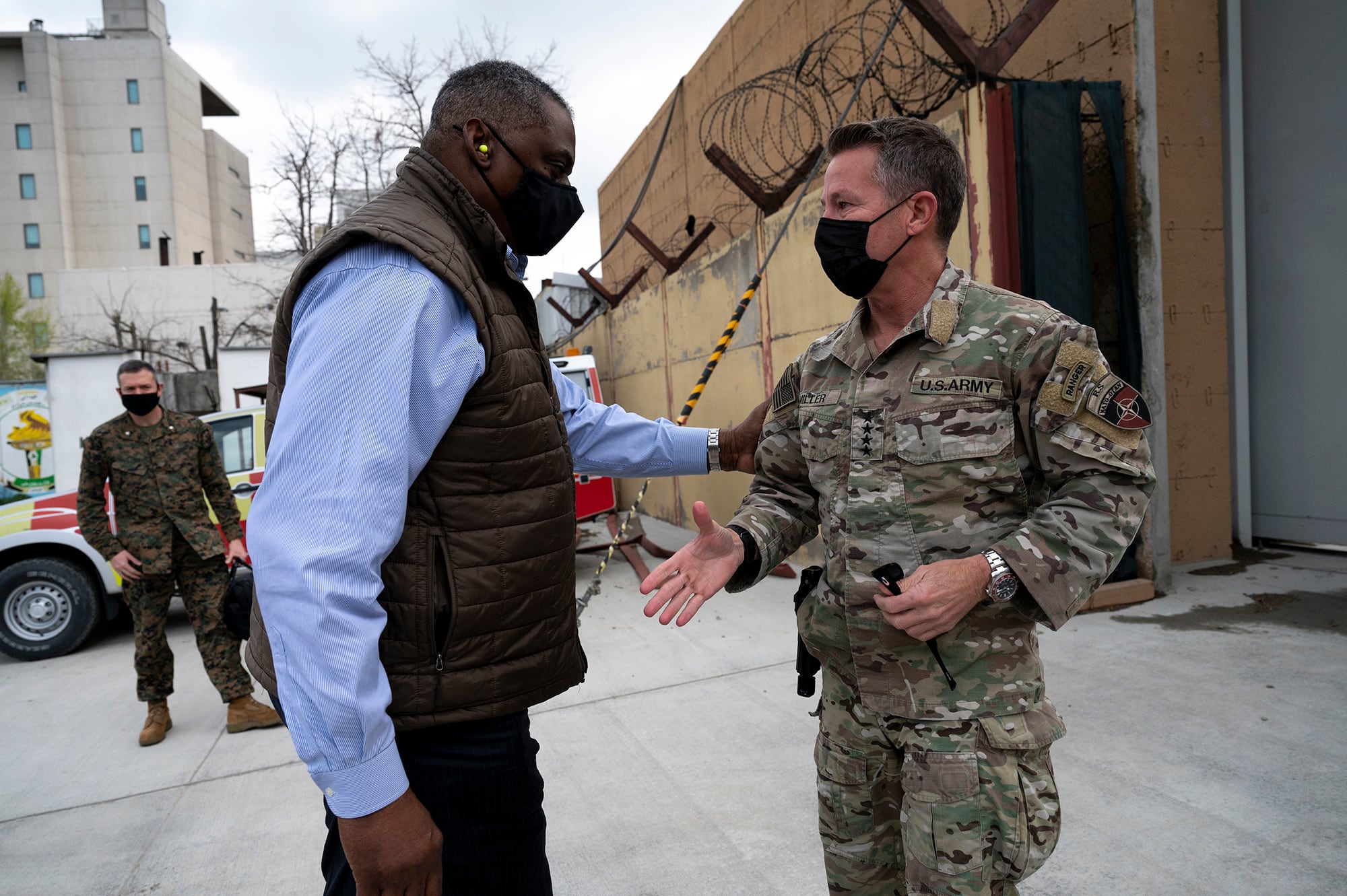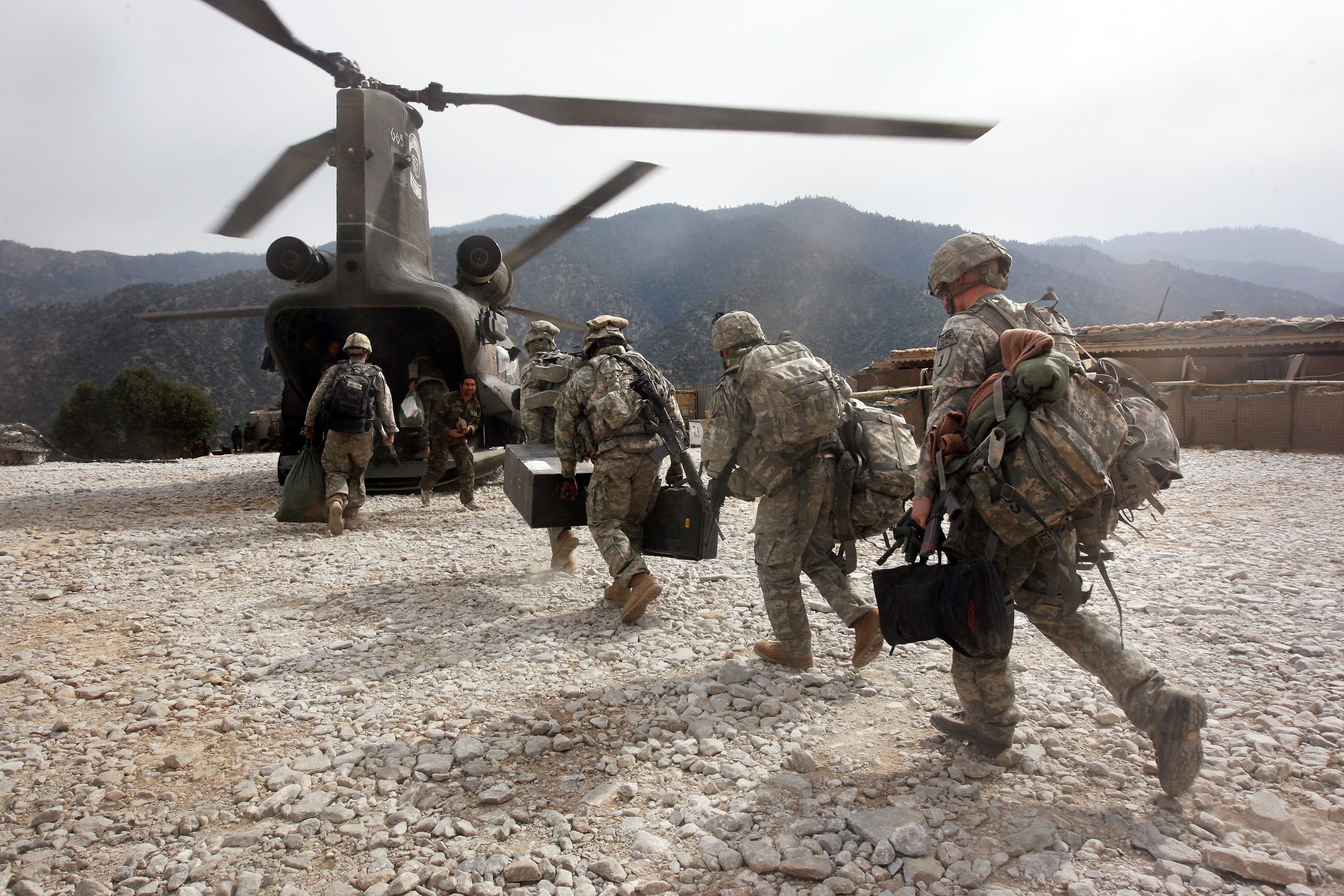WASHINGTON — The Pentagon is preparing for possible Taliban attacks on U.S. and coalition forces as they withdraw from Afghanistan, a prospect that complicates the outlook for winding down America’s longest war.
May 1 was the date all U.S. and other foreign forces were to have departed Afghanistan under a February 2020 deal between the Taliban and the Trump administration. As part of that agreement, the Taliban halted attacks on U.S. troops, and none has been killed since then. But the Taliban said it will consider the United States to be in violation of the agreement for missing the deadline for full withdrawal. Their representatives have been vague about whether they intend to attack starting May 1.
President Joe Biden’s decision to proceed with a final but delayed withdrawal adds a new element of security risk as the remaining 2,500 to 3,500 American troops, along with about 7,000 coalition troops and thousands of contractors, begin departing. Biden has said all will be gone by Sept. 11, the date of the 2001 terrorist attacks that prompted the U.S. to invade Afghanistan in the first place.
“We have to assume that this drawdown will be opposed,” Pentagon press secretary John Kirby said Tuesday in explaining why Defense Secretary Lloyd Austin decided to keep an aircraft carrier in the Middle East and to move at least four B-52 bombers and portions of an Army Ranger task force to the region as a precaution.
“It would be irresponsible for us not to assume that this drawdown and forces drawing down — both American and from our NATO allies — could be attacked by the Taliban,” Kirby added.
RELATED

Gen. Mark Milley, chairman of the Joint Chiefs of Staff, told reporters traveling with him Thursday that the pullout is “complex and not without risk.”
The military typically plans for worst-case scenarios to try to avoid being caught by surprise. The withdrawal from Afghanistan involves ground and air movements of troops, supplies and equipment that could be vulnerable to attack. For security reasons, withdrawal details are not being made public, but the White House and several defense officials confirmed Thursday that the drawdown has begun. Defense officials, speaking on condition of anonymity to discuss sensitive movements, said that in recent days some troops — described as “dozens” — and military equipment have left the country.
The State Department also is taking precautions. On Tuesday, it instructed all embassy personnel in Kabul to depart unless their jobs require them to be in Afghanistan. The order went well beyond the usual curtailment of staffers for security and safety reasons.
Even the most seasoned American analysts of the Afghan conflict are unsure what to expect of the Taliban. Bruce Riedel, a Middle East analyst at the Brookings Institution and former CIA analyst, wrote this week that it’s unclear whether the insurgents will attempt to disrupt the withdrawal, but he says they may escalate the war.
Seth Jones, a counterterrorism and Afghanistan expert as director of the international security program at the Center for Strategic and International Studies, said the Pentagon is wise to prepare for attacks, although he thinks the Taliban is likely to show restraint.
“They just want us to go,” he said in an interview. “And anything that starts to complicate that at least runs the risk of backfiring.” Among other things, killing Americans could prompt the Biden administration to rethink the withdrawal, which already is highly unpopular among many Republicans.
The possibility of resuming conflict with the Taliban is one of several uncertain aspects of the U.S. withdrawal — beyond the key question of whether the pullout will lead to the collapse of the Afghan government. The U.S. intends to continue counterterrorism operations, as needed, against al-Qaida and potentially other extremist groups in Afghanistan, but it’s not yet clear where those forces will be positioned. Also unclear is the extent to which American and coalition forces will continue to provide air and other military support for Afghan security forces during and after the withdrawal.
Gen. Frank McKenzie, who as head of U.S. Central Command is responsible for U.S. military operations in Afghanistan, has said little publicly about the likelihood of facing Taliban resistance.
“I would advise the Taliban that we will be well prepared to defend ourselves throughout the withdrawal process,” he said at a Pentagon press conference last week.

The extent to which the Taliban continue attacking Afghan government forces during the U.S. withdrawal also is a Pentagon concern. Milley said Wednesday that Afghan security forces form “an outer layer” of security for American and coalition forces.
“As we withdraw, that will be a critical component that we’re going to watch very, very carefully — the level of attacks that the Taliban conduct on the Afghan security forces,” Milley said during a McCain Institute Sedona Forum appearance. The recent trend is worrisome, he said, with the Taliban conducting anywhere from a few dozen to 100 or more attacks a day despite hopes for a cease-fire leading to a peace deal.
RELATED

The U.S. military ended its ground combat operations against the Taliban in 2014 and transitioned to training, advising and supporting Afghan forces, including providing air cover for them against the Taliban. The hope was that Afghan government forces could hold their own against the Taliban and that a political settlement could be reached. The departure of U.S. and coalition forces will test the Afghan government’s resolve in unpredictable ways, Milley said.
“In the worst-case analysis, you have a potential collapse of the government, a potential collapse of the military, you have a civil war, and you have all the humanitarian catastrophe that goes with it,” he said. On the other hand, the Afghan military has a lot of experience in countering the insurgents. “So it’s not a foregone conclusion that there will be an automatic fall of Kabul, so to speak,” he added.





